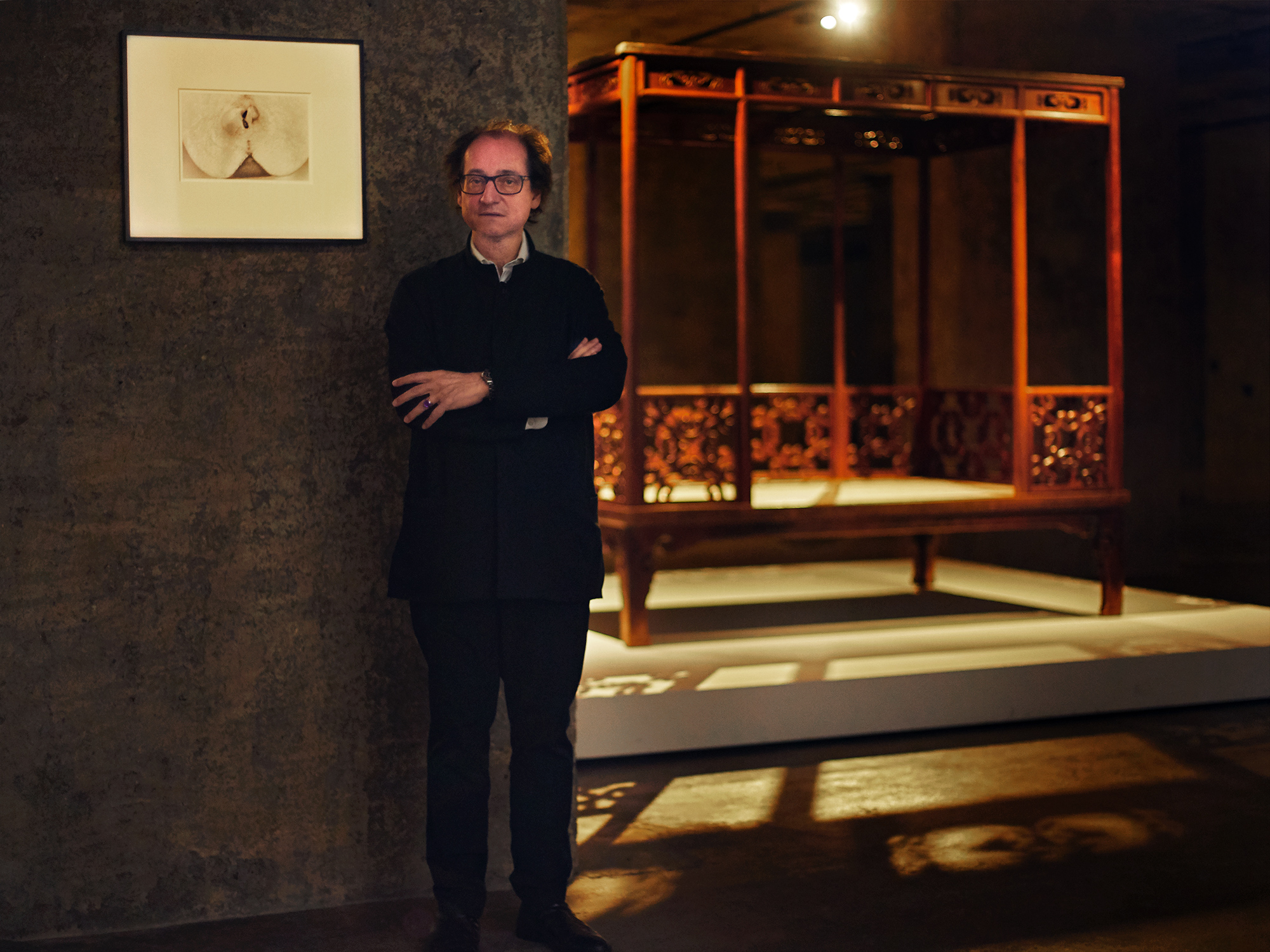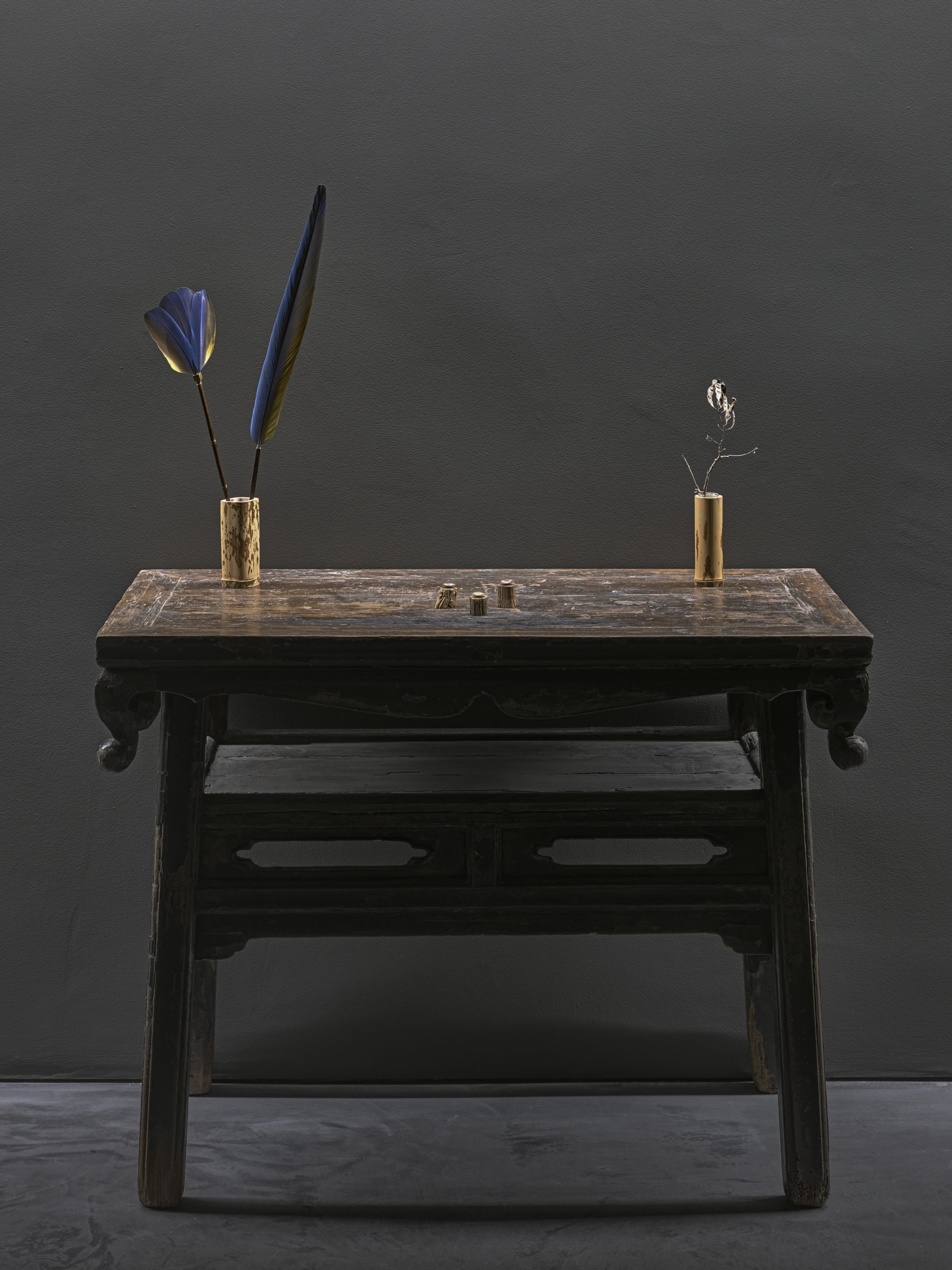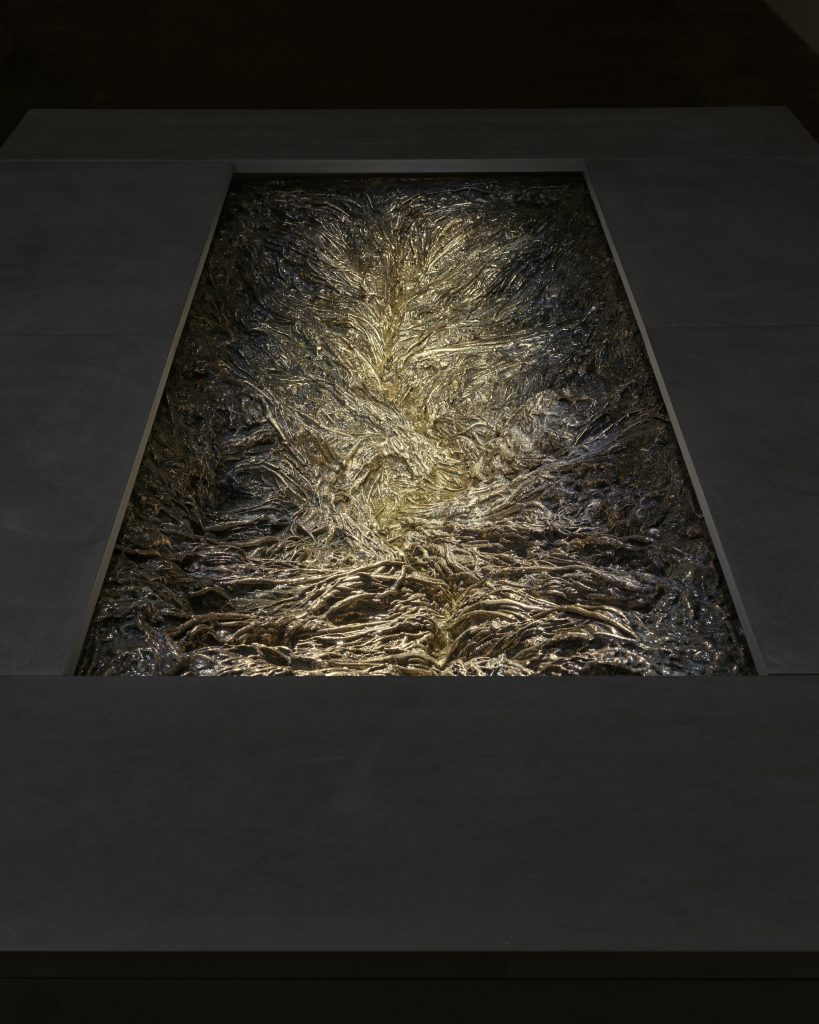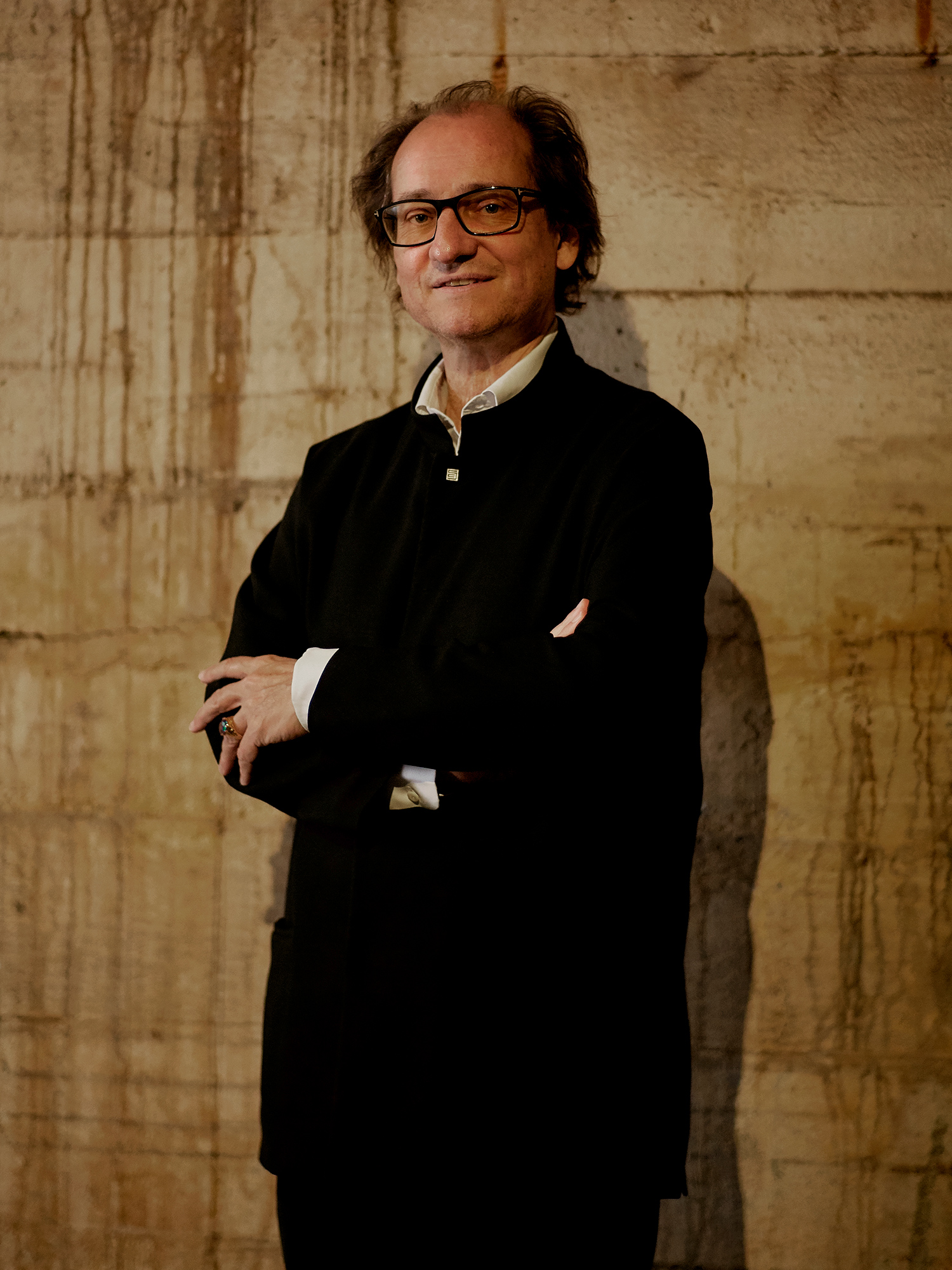Once you set foot inside the exhibition space, the way you had viewed and valued things becomes anew. It might sound hyperbolic, but there’s a private museum in Berlin that makes you want to tell someone out of sheer excitement. The museum—which stands out in a sea of museums and is by appointment only—in question is The Feuerle Collection in Kreuzberg. It was in 2016 when the former bunker was bought and renovated into its current form. The unique structure of the exhibition and its architecture mesmerize you from start to finish. Rather than simply viewing art, it’s more akin to having an extraordinary experience. The person who established the private museum is Désiré Feuerle, an internationally recognized art collector. In the spirit of Berlin Art Week, which would’ve been held in May, I asked him for his precious time and opportunity to walk around the museum and listen to him talk during my stay in Berlin.
A universal beauty that transcends time
Upon building his museum, the collector who travels the world, Désiré Feuerle, fell in love with the remains of a bunker built during the second world war, over half a century ago. British architect John Pawson reworked the interior of the bunker for the museum. In a way, it was inevitable for Désiré to choose Berlin to open the museum in 2016 to manifest something that transcended time.
“Out of the places I’ve been to, Berlin is by far the most appealing city. Young people from all over the world come here, and it’s also home to underground artists and new IT startups that influence Europe overall. I feel like the city itself is one form of contemporary art. Of course, if you ask me if Berlin is an elegant and beautiful city like Venice, then it’s certainly not. But the city is filled with interesting contrasts. So, I decided to add my gallery to this city with different values.”
Désiré smiles as he says this. The most notable characteristic of his museum is the coexistence of 11th century Khmer sculptures, art pieces, and furniture from the Ming dynasty era of the 16th century and photographer Nobuyoshi Araki’s works depicting kinbaku. Meaning, the artworks are displayed according to Désiré’s preferences, from the lighting to placement, without being limited to just contemporary western art and eras seen through a Feuerle aesthetic.
“Before I opened this museum, I collected artworks during my travels across the world. I narrowed down the pieces I was drawn to based on a sense of beauty they shared. The big themes are life and death and eros. I’ve chosen artworks that have these underlying values. Why do I mix and exhibit works from a few centuries ago with those by a contemporary artist?
“When I lived in northern Italy, the people of the city were impressed by how elegant my Japanese parasol was. People from a different culture leading a different lifestyle could appreciate beauty when they see beautiful art. This is what I anticipate [with The Feuerle Collection]. A new value emerges when you mix differing cultures and ideas. For those who’ve had a new realization, the world always has a completely new essence.”
He says this before we walk around the museum. His voice is calm, and there’s depth behind each of his clear English words.
“Before you view the artworks, you first immerse yourself in the very minimal music of John Cage in the Sound Room. This is a ceremony before you view the exhibition; a preparation to come face to face with the exhibited works.”
Encouraged by Désiré, we move to the pitch dark Sound Room and listen to Music for Piano No.20 by John Cage via speakers. It feels like a ceremony for cutting off one’s daily life. Rather than viewing art, it’s much more accurate to describe it as an experience. The second I get out of that space and enter the immense exhibition, a confrontation with overwhelming artworks awaits me.
Facing artworks that show the journey from BC to now
Nic Tenwiggenhorn © Nic Tenwiggenhorn / VG Bild-Kunst, Bonn
In the back is a space that’s 2000㎡ big per floor. There are no descriptions or notes attached to the displayed works placed spaciously. Although the collection here is permanent, each individual faces each piece in a brand new state. If you have questions, the guide will answer them.
I look at the works, all made in a different continent and time and carefully preserved until today over a few centuries, in the same building. Suddenly, my usual understanding of the past, present, and future dissipates, and I feel compelled to have an enriching, silent dialogue with the piece in front of me. This must be Désiré’s aim.
def_image© The Feuerle Collection
“I was meticulous about the details regarding things like the lighting of the exhibition space and placement. I wanted people to perceive small surges of emotion, surprise, and subtle signals that they wouldn’t notice in their everyday lives.”
What he says checks out; he has successfully created an interior that maintains his acute aesthetic as a collector. In one corner of the room is a transparent Lake Room. I’m met with a sensation that blurs boundaries and depth perception; I couldn’t tell where the next room started and ended because of the reflection of the water. The viewer should face the artwork with alertness by slowly adapting to the tranquil exhibition space that uses an optical illusion.
On the opposite wall is Araki’s photography of fruits and women being bonded tightly. And a bench from the Ming dynasty is enshrined there. I can’t explain their affinity with words. With that said, the mechanism here ensures that as you spend getting used to your surroundings, you’ll eventually obtain the ability to use your sensibilities freely to discern subtle relations or connections.
I climb a few steps from the center of the room, and the Incense Room comes to the forefront. The Feuerle Collection is the first museum worldwide to recreate the refined world of ancient Chinese incense culture.
The museum takes cues from the past—starting with the royal courts—and carries out a ceremony that’s been loved in China across several centuries.
In China, such ceremonies were honed for a few centuries until they spread to cultural figures, and then incense holders were created. During the Song Dynasty era (960-1279), they were made out of ceramics, and during the Ming dynasty (1368-1644), they were made out of copper.
On this day, Désiré welcomes us as guests with an aroma wafting from a golden vase stuffed with a fan made of a feather that a macaw dropped.
“You’ve been welcomed just now through my ceremony. Perhaps you felt some form of intimacy and aesthetics within my actions, which could be seen as contemporary.”
def_image© The Feuerle Collection
Once the ceremony is over, we go up to another floor. An exhibition space where one can enjoy the contrast between Araki’s work and pieces from the dynastic periods of China lies ahead.
Araki’s works and beddings from the dynastic eras; eros as observed in an intimate exchange in a limited space
“Many of the works from the dynastic era that I collect were usually used in private spaces. I picture the activities that took place in private spaces through beddings, bookshelves, and such. When I think about the spaces where royal families used to spend time with limited people, I feel a similarity between that and Araki’s photos of fruits and kinbaku, as that world was born in a limited space too.”
Nic Tenwiggenhorn © Nic Tenwiggenhorn / VG Bild-Kunst, Bonn
“I contrasted a 16th dynastic century table used for a guqin in private rooms against Araki’s fruit artwork. One side of a certain fruit, which has been used as a motif since ancient times, peaks from behind this table, which was handled with care. It looks like a sexual organ, and it also makes you sense a natural beauty. I see mystical eros from both pieces.”
Désiré speaks about his exchange with Araki happily:
“When I bought a piece from Araki, he once asked me, ‘Why don’t you buy a photograph of a bigger size?’ But I selected a photograph that’s as small as possible. Small photographs make us more attentive. Viewers feel encouraged to get closer to the subject when a photograph is small, and that makes them face it with a deliberate attitude that’s different from usual. When I told him that, he said, ‘I see’ and understood.”
The beauty of mortality in contemporary art outside of the east
The second floor has works made by contemporary artists too.
“This river piece is by a contemporary Spanish woman artist called Cristina Iglesias. The never-ending current calls to mind an eternalness and makes me feel the mystique of life a la internal organs and blood vessels. I believe it’s appropriate to show contemporary western art if it fits the theme of life and death and eros.”
I don’t think I could comprehend the intense impression these artworks—which have been collected by Désiré going from country to country over a long period—provides on the viewer just from this sole experience. It seems like it’s going to take some time to process.
When I tell this to him, he responds in a satisfied manner: “Nothing would make me happier than for the young generation to have their realizations by looking at these artworks, even if it’s a small one. Every time I enter the exhibition room, my mood becomes relaxed, and I look at the works from a different angle, as it makes me feel young again.”
Seeing is believing. I urge you to consider Berlin as one of your destinations once the pandemic has settled down to visit this gallery.
■The Feuerle Collection
Location: Hallesches Ufer 70, 10963, Berlin
Website: www.thefeuerlecollection.org
*A reservation is required for a personal tour guide. A Japanese guide is also available.
Photography Hinata Ishizawa
Direction Kana Miyazawa
Translation Lena Grace Suda









